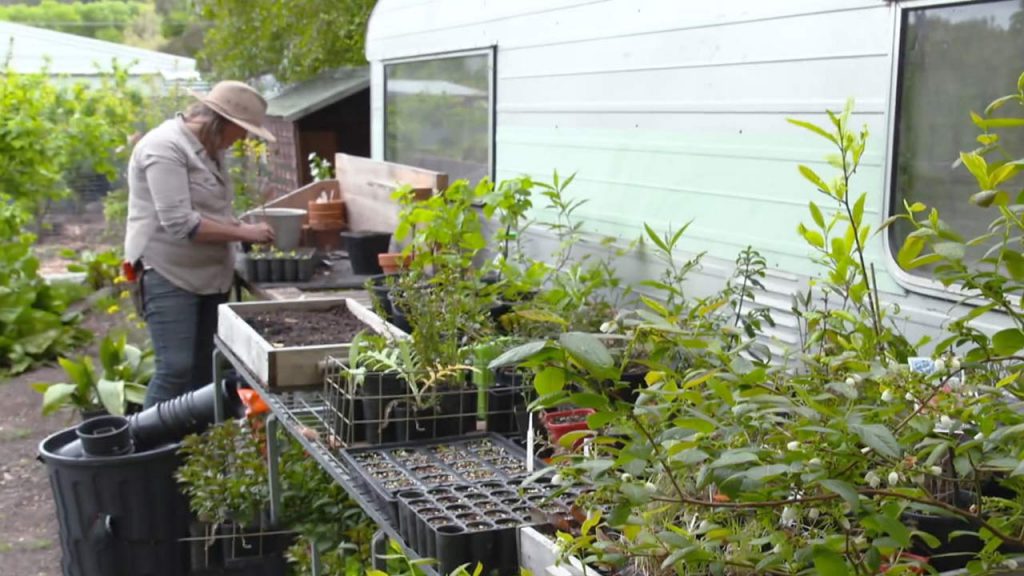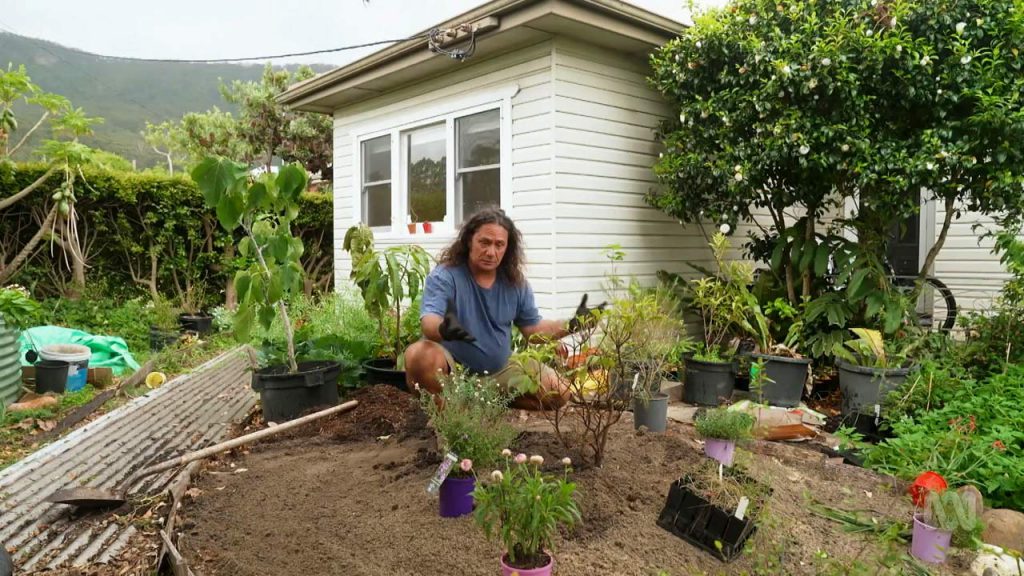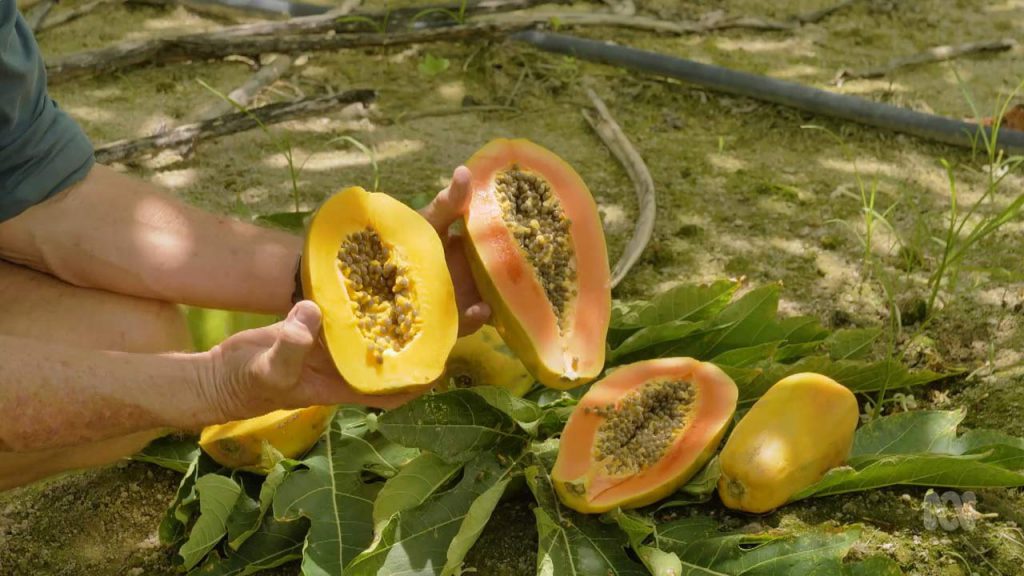Gardening Australia episode 29 2022: Costa meets a grower inspired by botanic gardens; Josh learns about cockatoo conservation; Tammy heads to a rare plant fair; Mille meets inspiring neighbours; we visit a couple cultivating their relationship and their garden.
Inspiring, entertaining and full of practical advice, join Costa Georgiadis and the team as they unearth gardening ideas, meet avid gardeners and look at some of the most inspiring gardens from across the country.
Gardening Australia episode 29 2022
Pretty as a Picture
Costa meets a passionate gardener inspired by her local botanic garden to grow biodiverse and beautiful plants in her backyard. A short stroll away from the stunning collection of native plants at the Australian Botanic Garden Mount Annan, is a smaller home collection bursting with beauty and biodiversity. This is the impressive first garden of illustrator and photographer Rae Bassett, a self-taught gardener who transformed a blank canvas with colourful native flowers.
In the sunny raised beds there are flannel flowers thriving with excellent drainage, a South Australian form of Austral Bugle with spires of purple blooms, and lots of beaming perennial paper daisies. It’s hard to pick a favourite but Rae says “Eremophila nivea is a spectacular shrub. It’s the beautiful soft grey foliage with the purple flowers, it’s a truly stunning shrub and it should be in every Australian garden I think.” When young “you need to constantly tip prune the eremophilas to get them to develop a nice dense shape.”
Rae has used lots of colour to contrast and complement each plant in these front beds. There are bright red kangaroo paws and grevilleas, yellow billy buttons and mauve dampiera creating a vibrant rainbow. Whilst the south facing beds towards the back are shady, Rae hasn’t stopped adding interesting and beautiful plants. A Thomasia tryphylla softens the space with unusual large leaves and hairy, brown stems, and a Plectranthus ‘Blue Spires’ adds colour with variegated leaves and bright blue flowers.
Caring for Cockatoos
Josh visits a black cockatoo rehabilitation centre to learn how they are revegetating the local bushland to grow food to supply birds in their care and in the wild. Josh is visiting the Kaarakin Black Cockatoo Conservation Centre in the Perth Hills, on Whajduk Noongar Boodja. They rehabilitate and rescue three species of Western Australian black cockatoo: Carnaby’s black cockatoo, Baudin’s black cockatoo, and Forest Red-Tail black cockatoo. These birds are threatened and endangered largely due to habitat loss in the Southwest, particularly clearing of trees in the Wheatbelt for agriculture, and urbanisation destroying Perth’s coastal Banksia woodlands. They are charismatic, loud, smart, large, and a symbol of conservation in WA.
Glenn Dewhurst has been saving black cockies for decades, starting to rescue and rehabilitate birds in his home, before moving to a dedicated site. Many of the birds at Kaarakin have injuries sustained from cars, as well as encounters with cats, dogs, and ravens. He says ‘the ultimate goal is to rescue, rehabilitate, and release.’ They release dozens of rehabilitated birds each year, however some have to stay in their care indefinitely. Glenn explains, ‘unfortunately, not all birds make it back into the wild flocks… They must be able to fly well before we release them. If the birds can’t fly well, they become a food source for birds of prey, eagles will eat them.’
Revive the Lime
Clarence dives into an overgrown lime tree to give it a much-needed prune, to encourage prolific fruiting and beauty in the garden. Clarence’s Tahitian Lime tree is in desperate need of pruning. It is overgrown, reducing fruit production and quality. It needs a good hard prune to get it rejuvenated and growing again. What’s better than an iconic haircut to bookmark a new point in your life!
Collectors Gone Wild – Gardening Australia episode 29 2022
Tammy visits a rare plant fair to check out what’s on offer, chat with collectors, and choose a few plants to take home herself. The Collector’s Plant Fair is held in north-west Sydney every year, growing into a major event since 2005. It attracts the most hardcore plant nerds along with weekend gardeners, all keen to see what’s on offer from some of Australia’s top growers.
Specialist nursery owner David Fripp has been part of it since the start when “it was just in someone’s private property. I think there were 20 stalls, and it was in a paddock.” It got bogged a few times, but true plant people would go anywhere for plants! It’s now 200 stalls with a whole new generation of growers and punters.
This year David has focused on begonias, including the interesting ‘Fabulous Tom’ cultivar, a prostrate cane type with spotted leaves that’s great for hanging baskets and can handle the cold. He’s also brought along some unusual specimens such as Nematanthus wiehleri, hoping to share his “unbridled passion for gesneriads”.
There are plenty of weird and wonderful specimens for collectors including the alien-like stapelias, the perfect addition to a succulent or cacti collection. Keith Tollis has been growing them for 20 years and loves the flowers. “They’re striking, they’ve got furry petals which are absolutely amazing. They actually attract flies, their main pollinator” which is due to the smell that be a bit like dead fish!
Top Tip: Soil Biodiversity
Jerry delves into the diversity that makes up healthy soil. Many gardeners want to boost the biodiversity found in their garden, as a way of helping out the environment. It’s a powerful idea to think of your little patch of earth acting a sanctuary for other life on this planet.
But Jerry says when you’re thinking about biodiversity, you shouldn’t limit yourself to thinking about “things with feathers and fur”. Installing a nest box and setting up a bird bath is one thing, but what about what’s under your feet?
Scientists estimate that around half of all life on earth exists in the soil. Trillions upon trillions of bacteria, invertebrates, fungi and a myriad of other lifeforms. A single teaspoon (1 gram) of rich garden soil can hold up to one billion bacteria, kilometres of fungal filaments, several thousand protozoa, and untold scores of nematodes. It’s an entire galaxy of life, hidden just below the surface.
The base of the ecosystems happening in your soil is organic matter, material derived from living stuff, things like mulch, plant leaves, manures and compost. By adding these to your soil, you’re not only increasing the soil’s physical properties for growing plants, but you’re also providing food and habitat for this huge swathe of life to survive, thrive and flourish. No wonder we’re so mad on compost here at Gardening Australia!





can you make this episode 29 of gardening Australia 2022 available at Daily Motion as it is not there
Try again is there, make sure you don’t have adblokers